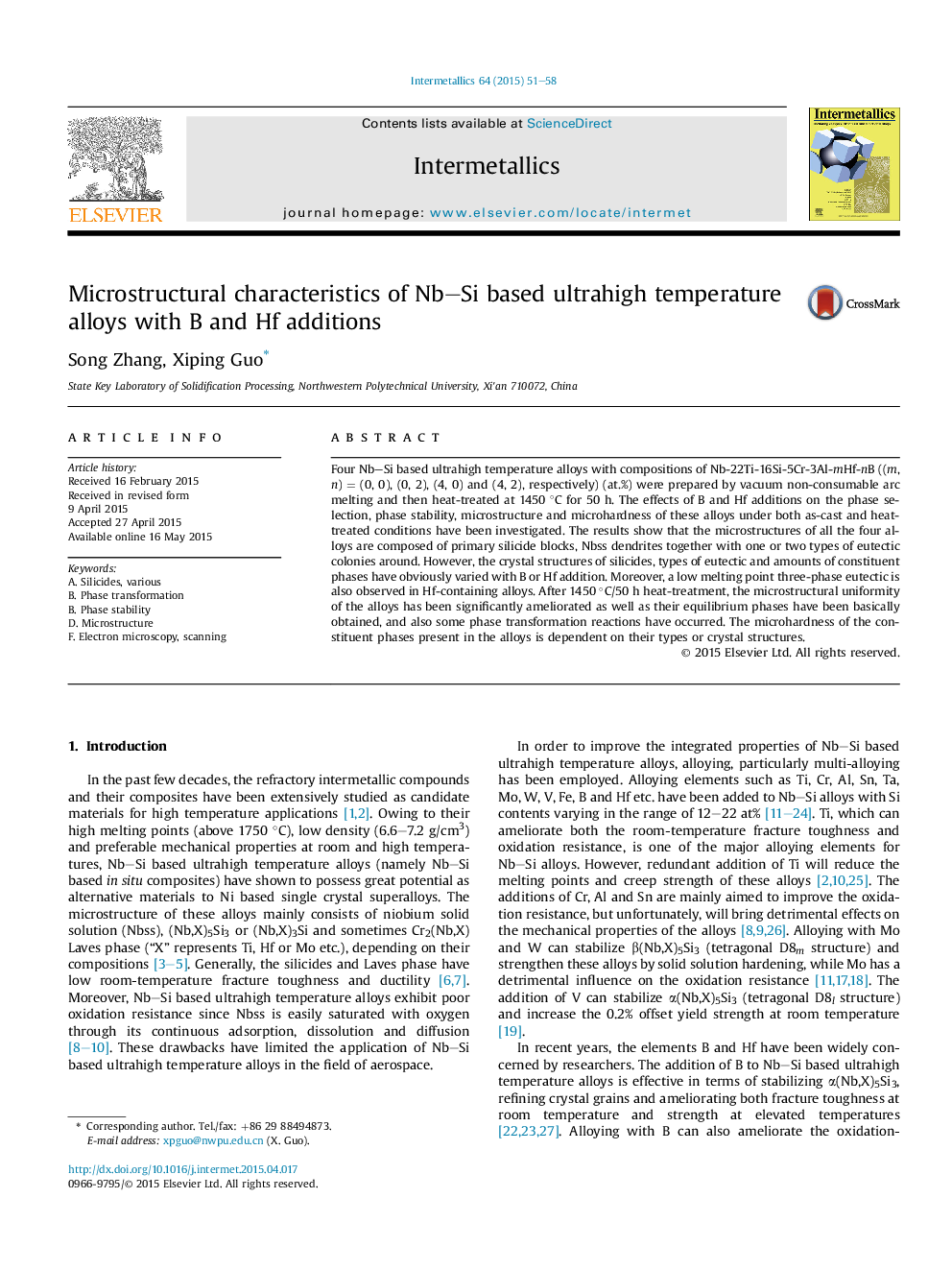| Article ID | Journal | Published Year | Pages | File Type |
|---|---|---|---|---|
| 1599836 | Intermetallics | 2015 | 8 Pages |
•The combined addition of B and Hf has a strong effect of promoting γ(Nb,X)5Si3.•β(Nb,X)5Si3 completely transformed into α(Nb,X)5Si3 during heat-treatment.•α(Nb,X)5Si3 can be in equilibrium with γ(Nb,X)5Si3 in the alloy with B or Hf.•In the presence of B, lower (Ti + Hf) concentration can still stabilize γ(Nb,X)5Si3.•The hardness of 5-3 silicides exhibits a trend of γ > α > β.
Four Nb–Si based ultrahigh temperature alloys with compositions of Nb-22Ti-16Si-5Cr-3Al-mHf-nB ((m, n) = (0, 0), (0, 2), (4, 0) and (4, 2), respectively) (at.%) were prepared by vacuum non-consumable arc melting and then heat-treated at 1450 °C for 50 h. The effects of B and Hf additions on the phase selection, phase stability, microstructure and microhardness of these alloys under both as-cast and heat-treated conditions have been investigated. The results show that the microstructures of all the four alloys are composed of primary silicide blocks, Nbss dendrites together with one or two types of eutectic colonies around. However, the crystal structures of silicides, types of eutectic and amounts of constituent phases have obviously varied with B or Hf addition. Moreover, a low melting point three-phase eutectic is also observed in Hf-containing alloys. After 1450 °C/50 h heat-treatment, the microstructural uniformity of the alloys has been significantly ameliorated as well as their equilibrium phases have been basically obtained, and also some phase transformation reactions have occurred. The microhardness of the constituent phases present in the alloys is dependent on their types or crystal structures.
